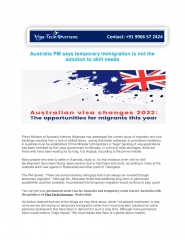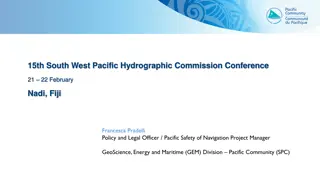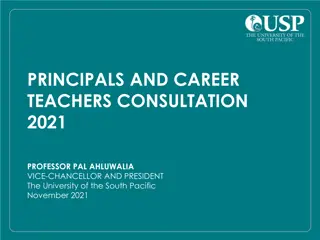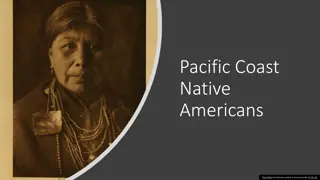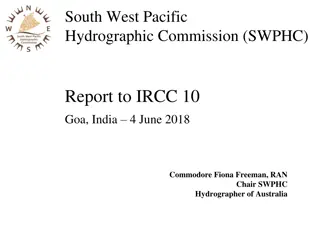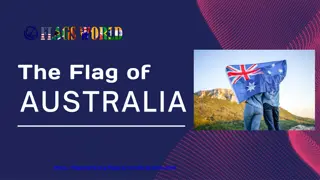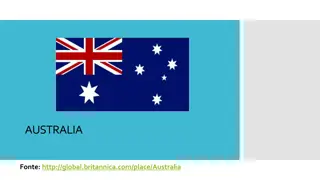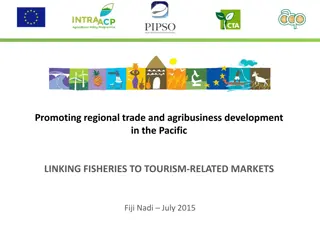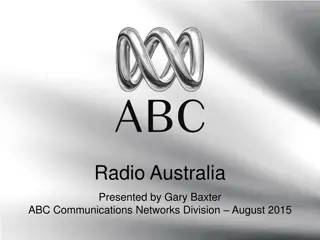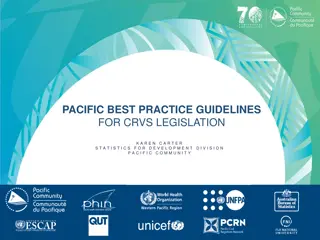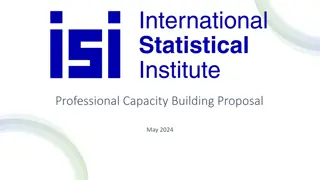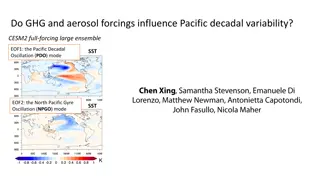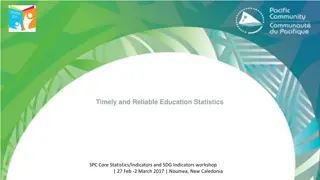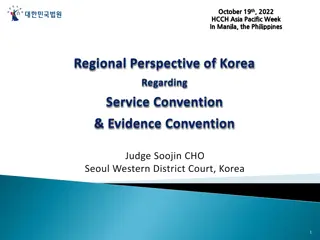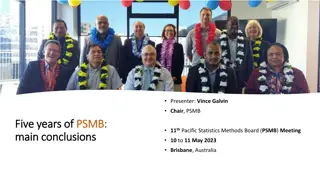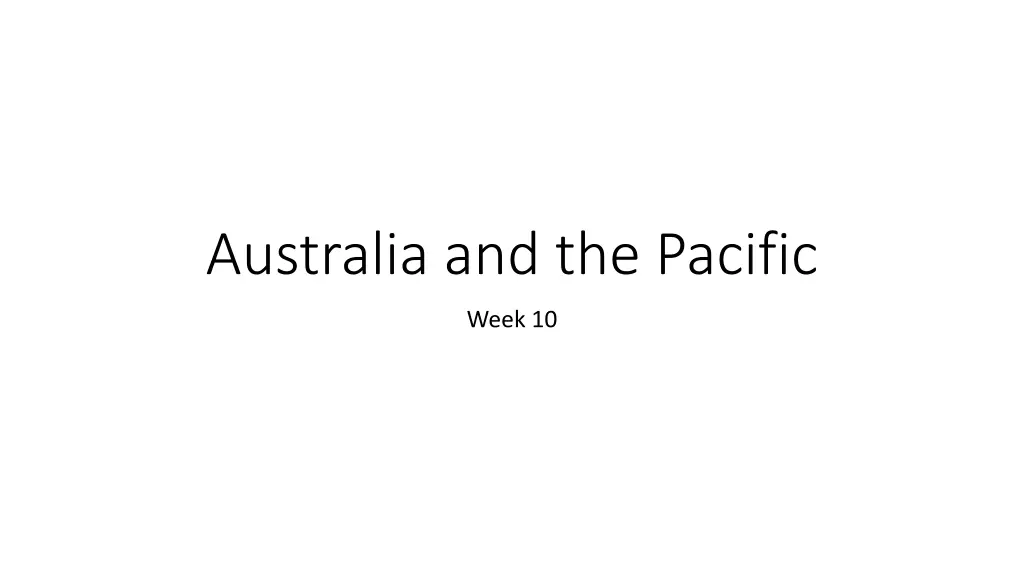
Racism and Public Health in Australia and the Pacific: Historical Perspectives
Explore the historical context of racism and public health in Australia and the Pacific, covering topics such as the cultural perceptions of Aboriginal populations, the establishment of public health systems, and the impact on healthcare outcomes. Delve into key works by Warwick Anderson, Linda Bryder, and Tom Griffiths to understand how race and healthcare intersected in this region.
Download Presentation

Please find below an Image/Link to download the presentation.
The content on the website is provided AS IS for your information and personal use only. It may not be sold, licensed, or shared on other websites without obtaining consent from the author. If you encounter any issues during the download, it is possible that the publisher has removed the file from their server.
You are allowed to download the files provided on this website for personal or commercial use, subject to the condition that they are used lawfully. All files are the property of their respective owners.
The content on the website is provided AS IS for your information and personal use only. It may not be sold, licensed, or shared on other websites without obtaining consent from the author.
E N D
Presentation Transcript
Australia and the Pacific Week 10
Warwick Anderson, The Cultivation of Whiteness: Science, Health and Racial Destiny in Australia (Melbourne, 2002), Ch. 7: From Deserts the Prophets Come, pp.191- 224. Debate in the 20thCentury about how Aboriginal Australians came to Australia. Anthropologists investigated the remaining full blooded Aboriginals. Anthropologists initially believed that aboriginals were the mixed descendants of Africans from Tasmania and Asians from South East Asia. However, by using blood samples they determined that this was not true and that they were solely descendants of Asians. They also saw Aboriginals as a realtime process of evolution/civilisation. By being exposed to civilisation they believed that Aboriginals would civilise faster. He was interested also in comparative studies in physiology, hematology, and pathology; and he hoped for an answer to the question of how far the lowest race is capable of intellectual development.
Linda Bryder; A New World? Two Hundred Years of Public Health in Australia and New Zealand , in Dorothy Porter (ed.), The History of Public Health and the Modern State (Amsterdam, 1994), pp. 313 334. Australia and New Zealand initially had little public health infrastructure. This is due to the medical belief that the climactic conditions and the way things were built being inherently anti-disease. However, the conditions in the slums of cities such as Sydney and Melbourne were often worse than those in the East End slums such as Whitechapel. This led to the creation of public health systems in the early twentieth century and the eventual establishment of universal healthcare systems by the 1960s. Extra healthcare services were set up for the Aboriginals and Maori, due to their worse healthcare outcomes, however there was little focus on traditional forms of medicine. Public health in the early twentieth century aimed to improve the quality of the white population. When attention was later focused on the non-white indigenous populations, there was no attempt to work through or show any respect for traditional channels
Tom Griffiths, Hunters and Collectors: The Antiquarian Imagination in Australia (Cambridge, 1996), 'Ch. 3: The Stone Age,' pp. 55-85. The Stone Age - the Aboriginal population in Australia was understood as a stone age society that was developmentally frozen in time The archeological pursuits of a history or any antiquity for this population were frustrated by its specificity, leading to the field devolving to merely collecting stone instruments in a scientifically unsophisticated manner Genuine archeological exploration or concern for historical knowledge was hindered by readily accepted racial preconceptions; - Aboriginal populations had no history or antiquity - No technological or cultural development (in the conventional sense) As anthropology was institutionalized in 20thcentury Australia, it still rejected a historical approach, but incentivized by anxieties of the vanishing Aboriginal population, feverishly aimed to document their culture by venturing to their villages and, most controversially, collecting human remains (with little discrimination of their provenance) Summary of the position of Victorian collectors according to Griffiths: Typology was confusing, antiquity was elusive, cultural change was impossible, theory was evil.
Malcolm Nicolson, Medicine and Racial Politics: Changing Images of the New Zealand Maori in the Nineteenth Century , in David Arnold (ed.) Imperial Medicine and Indigenous Societies (Manchester, 1988), pp. 66-104. Nicholson wanted to challenge the assumed objectivity of the medical profession, and emphasize personal experience, objectives, and beliefs as factors that influenced medical testimony The provision of hospitals for the Maori was undertaken with specific social and political purposes; religion, education, racial integration. Nonetheless the role of medicine as a tool of empire proliferated, led to frequent co-operation and increased sophistication on part of this group when advising policy Each author actively selected both the data and cultural resources with which he constructed his image of the Maori [to justify and rationalize the] political interest they espouse. Medical images of the Maori were cultural constructs, expressing not empirical reality itself but a particular relationship between the reality and a specific observer. Nicholson
Written in support of particular interest groups (missionaries/colonial administration/settlers) Nicholson s Sources: Missionary Medicine: Romantic Savages Imperial Medicine: Amalgamating Savages John Savage: Noble Savages Settler Medicine: Dying Savages (William Marshall) (Arthur Thomson) (Alfred Newman) Some admiration (Romantic Savage), unimpressed by their societies Sinful and barbaric Natural lifestyle, harmony with nature (almost enviable) Maori are doomed; no point to accommodate them or waste resources on them European Christian contact is necessary (justification of empire) European contact will be detrimental; venereal diseases, alcohol and general corruption Distaste at prospects of integration and miscegenation Policy of Racial Amalgamation: Maori should be integrated, socio-culturally but also, racially Not noble or ignoble; require redemption but crucially NOT irredeemable Vaguely polygenist Vaguely monogenist Each author actively selected both the data and cultural resources with which he constructed his image of the Maori [to justify and rationalize the] political interest they espouse. Medical images of the Maori were cultural constructs, expressing not empirical reality itself but a particular relationship between the reality and a specific observer. Nicholson
Paul Turnbull, British Anthropological Thought in Colonial Practice: The appropriation of Indigenous Australian bodies, 1860-1880 , in Bronwen Douglas and Chris Ballard (eds.), Foreign Bodies: Oceania and the Science of Race, 1750-1940 (Canberra, 2008), pp. 205- 228. Attempt to challenge the singular explanatory framework of procuring indigenous remains to support Darwinian theory of racial difference; a pluralism of motivations 1863 Split in the Ethnological Society (Monogenism vs Polygenism) The appropriation of their ancestral remains had consequences for native Australians; (for different reasons) there was an intellectual consensus that the indigenous population was racially incapable to adapt and would inevitably become extinct; this informed decades of colonial policy Australia increasingly served as a zone of intellectual and material feedback to the metropole Human remains became an increasingly desired commodity used as evidence to prove or disprove anthropological theories; they provided a medium to channel these debates If you should wish to have more skulls, I may have opportunities of obtaining some [ ] Those from freshly dead natives would of course be most valuable and those I do not know how to get. I think I would undertake to clean them myself if I had them, as I have often prepared the skulls of lower animals. Exchange between local collector and George Rolleston (Darwinian, a metropolitan collector of Australian specimen)
How did the metropolitan and colonial structures of knowledge generation reconcile their approaches and ideas about race and indigenous people in Australia and the Pacific? Was the desecration of human remains for scientific progress a necessary evil, and what were the contemporary justifications and reservations for this practice?

